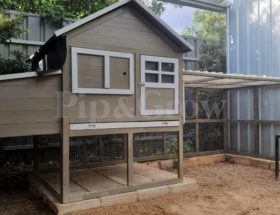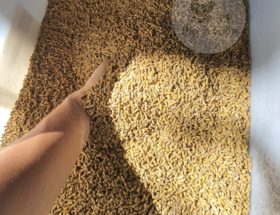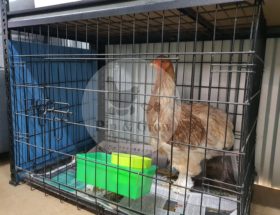In Part 1, we covered the primary considerations before purchasing a chicken coop, including setup style, material, predator-proofing, and fencing. Now, let’s delve into the next set of important factors to ensure a successful coop setup.
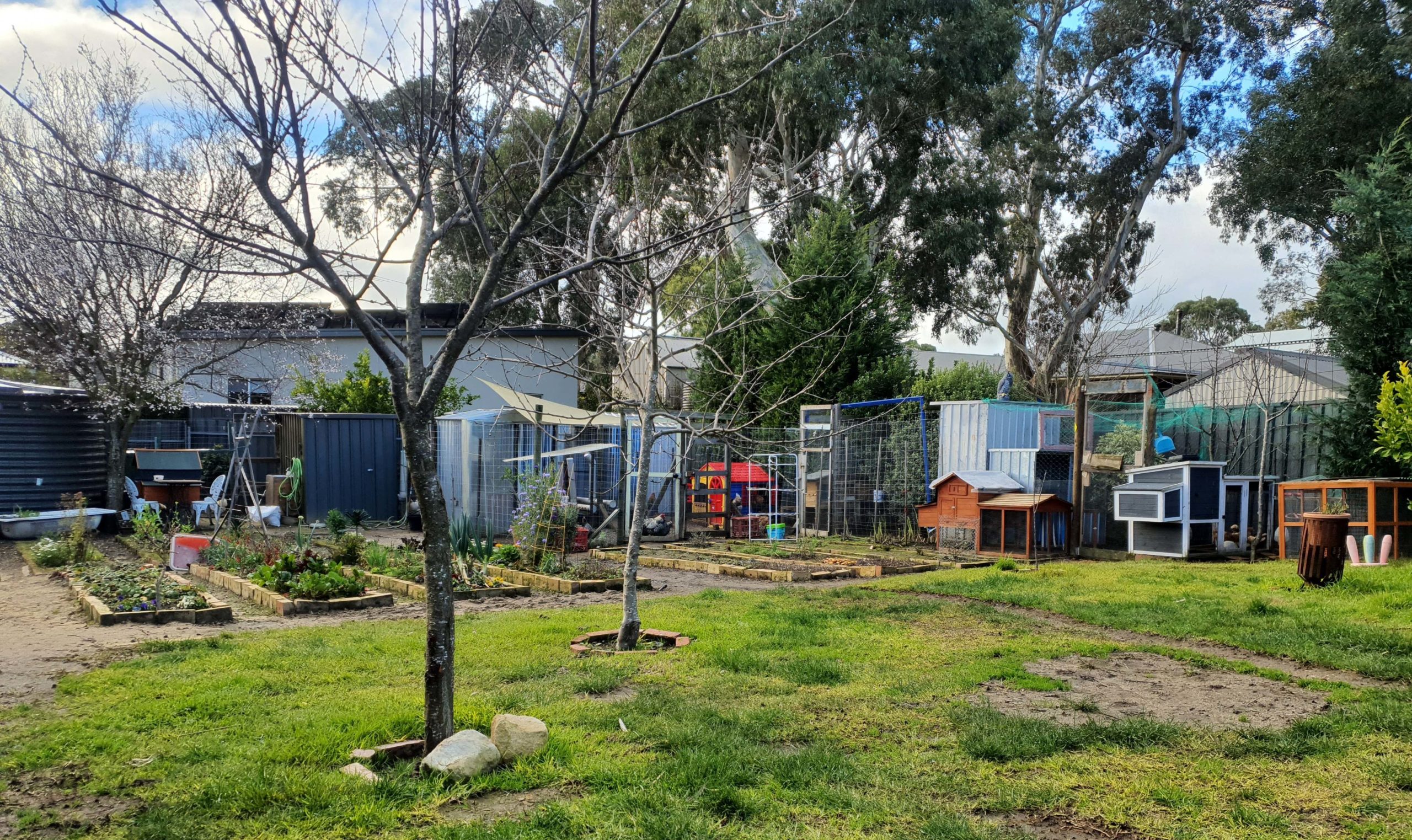
Location of the coop
Chickens require natural light for regular egg laying and calcium absorption, especially during the laying season. Therefore, it’s essential to place the coop where it will receive plenty of sunlight throughout the day. However, it’s equally important to protect the coop from excessive heat during hot summer months. A suitable location might be somewhere that receives morning to mid-afternoon sun but has a tree canopy to provide shade and cover from direct heat.
Another important consideration is managing rainfall and preventing muddy conditions in the chicken run and pen. Underestimating rainfall can lead to muddy conditions in the run area, which can be uncomfortable for the chickens and detrimental to their health. Avoid placing the coop and run in areas prone to water accumulation or where rainwater runoff flows. If there’s no alternative location available, consider elevating the ground level where the coop will be situated using sand or gravel prior building new coop. Additionally, create trenches around the coop to divert rainwater away from the pens, preventing muddy conditions during the rainy season.
We’ve learned from past mistakes; during the summer, everything seems fine, but during the rainy season, our coops become excessively wet, leading to muddy runs. This not only looks unappealing but also makes everything messy, including the eggs which never seem to come clean. Moreover, the high moisture in the pen becomes a breeding ground for germs, leading to respiratory issues and unpleasant odors. When the sun finally comes out, it becomes a haven for mites.
Please do not underestimate the ground level of the chicken run and choose the location wisely. Once the run and pen are set up, moving them becomes quite challenging after investing considerable effort.
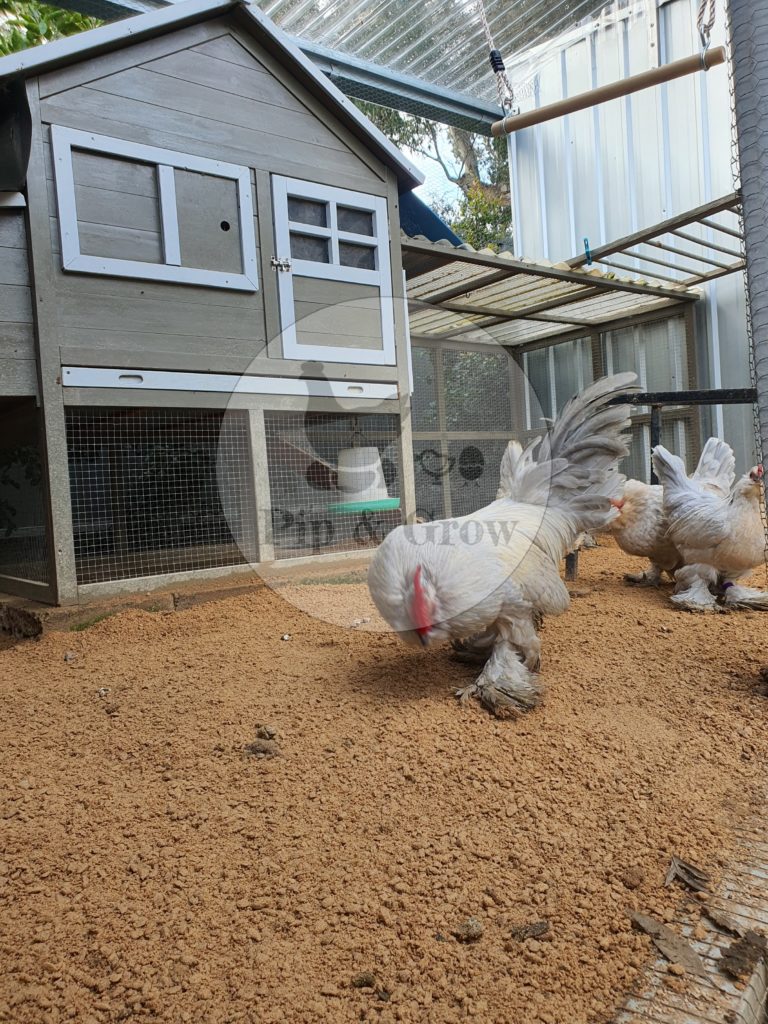
Flooring material a.k.a Bedding
This will heavily rely on the circumstances of each keepers. How big is the run or coop, do chickens stay in the pen all times or free range etc. Consider the flooring material for easy cleaning and maintenance.
materials like straw, wood shavings, or sand for the coop floor, which can be regularly replaced or cleaned out.
We have tried following materials for our pens.
- The deep litter method is a widely used technique for managing coop bedding, where layers of materials like straw or wood shavings are continuously added to the floor over time. Rather than frequently removing soiled bedding, this method relies on natural decomposition by beneficial microorganisms to create a composting effect within the coop. While effective in many cases, it may not be suitable for small or poorly ventilated coops where odor and moisture buildup can become issues. Keeping up with the regular addition of natural materials like shavings and straw can also be demanding and it may take some time for the entire ecosystem to function efficiently.
- Straw is a cost-effective option that can be composted after use. However, it needs regular cleaning as it quickly loses freshness. Its tendency to become heavy and tangled can make it challenging to remove from the coop. Additionally, caution should be taken when using straw to prevent tripping hazards for chickens, and it’s best avoided in wet or muddy conditions.
- Quartzite Sand (or any coarse sand type) is ideal for enclosed pens, offering easy cleaning akin to fine cat litter for chicken droppings. However, it demands regular maintenance every 2-3 days to prevent the accumulation of droppings that can harden into a crust. Over time, it may become compacted, requiring periodic turnover to retain its fluffy consistency. It’s best used indoors and not advisable for outdoor runs, particularly during wet or hot weather.
- No bedding – In certain setups, bedding is omitted entirely, and the coop floor is constructed solely of concrete blocks. This approach simplifies cleaning, particularly with the use of a shovel, especially if the chickens predominantly roam outdoors. Consequently, indoor bedding may be deemed unnecessary in such setups.
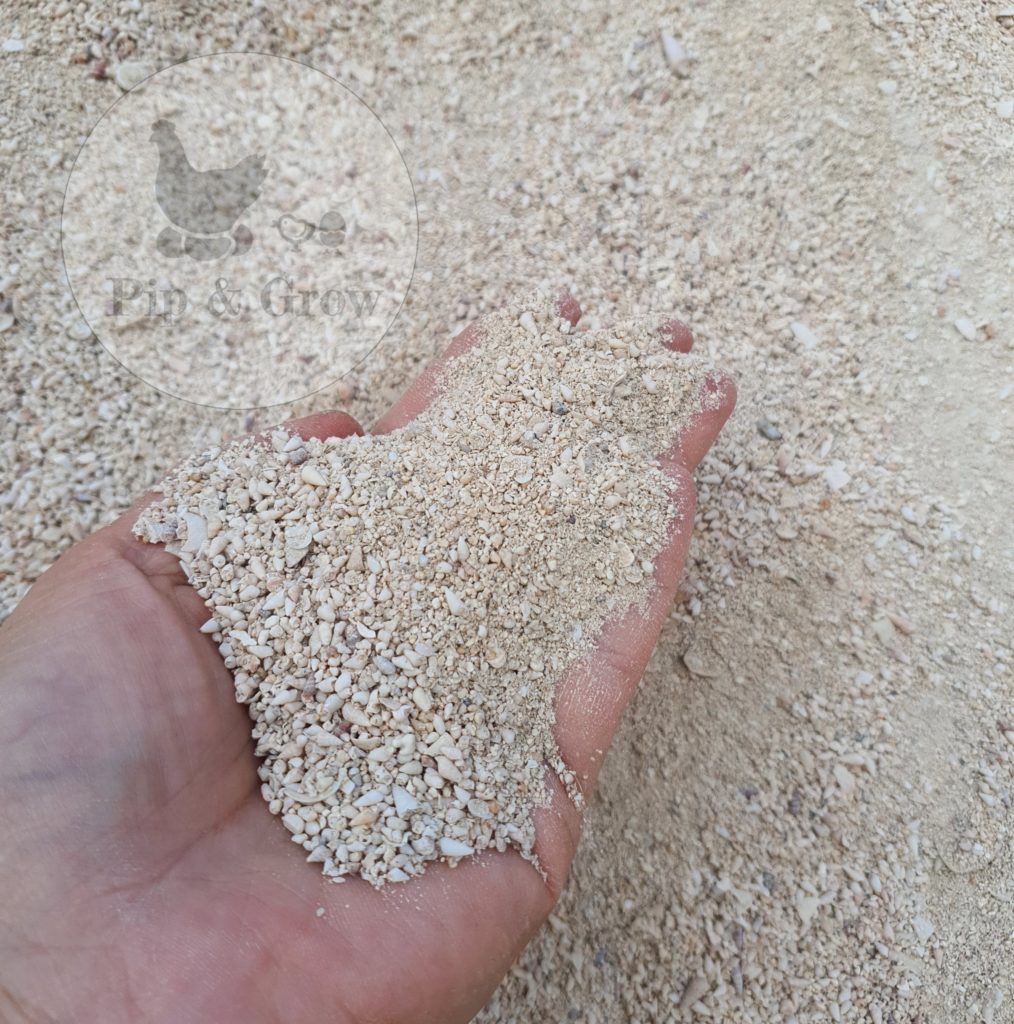
Shellgrit is our current bedding material of choice in both our grower and breeder pens. It differs from the shellgrit supplement found in fodder shops, as it contains tiny shells and pieces mixed with beach sand. This unique blend makes it airy, lightweight, and resistant to becoming muddy or compacted. Cleaning droppings is a breeze, and it also provides a source of calcium for the chickens if consumed. However, keep in mind that Shellgrits still require regular cleaning to maintain tidiness, as mushed droppings can accumulate. Due to its airy nature, it tend to disappear quickly during pen cleaning due to their airy nature, so regular top-ups are necessary. While it doesn’t hold moisture well, it can be dusty, so we highly recommend wearing a mask during cleanup.
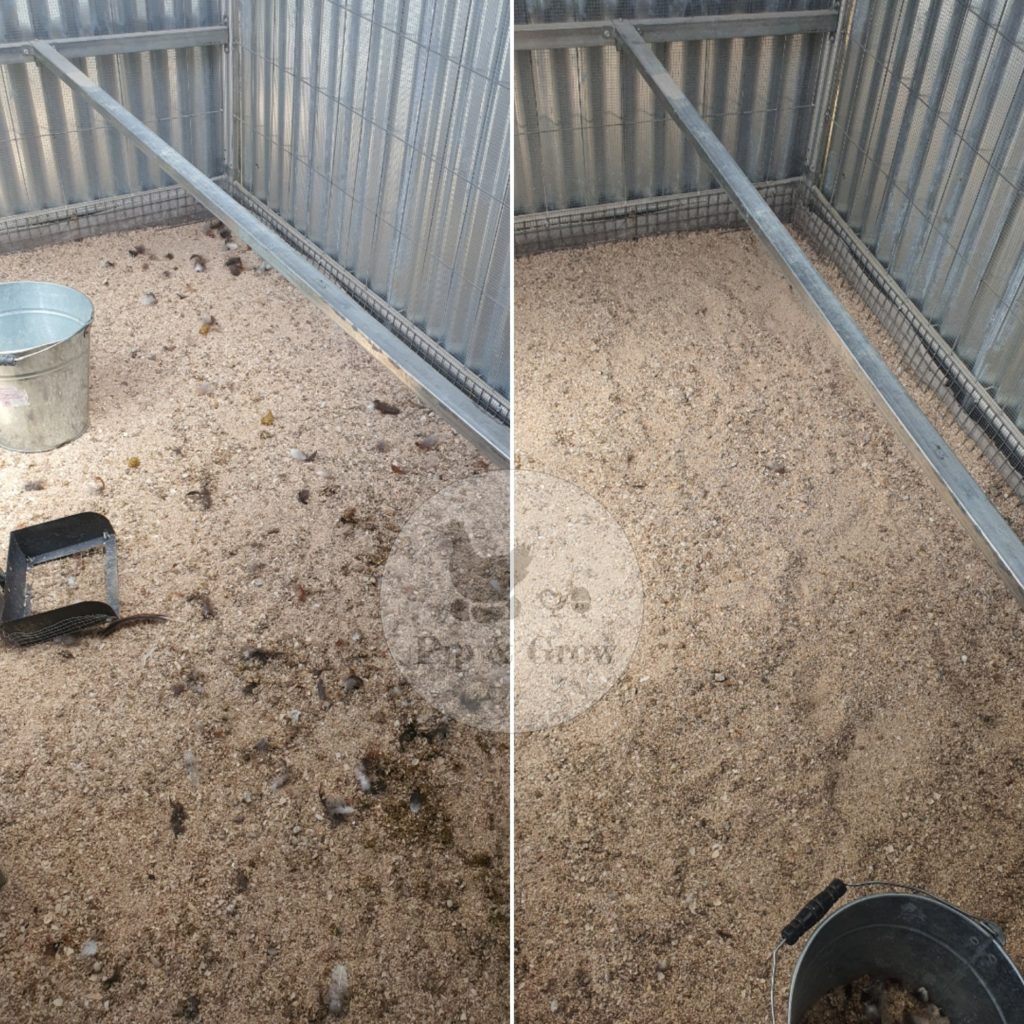
Shellgrit may be pricey and challenging to source in small quantities, as it’s not commonly stocked by landscaping suppliers. We were fortunate to find a supplier who delivers regular truckloads in large quantities. However, it’s worthwhile to contact multiple suppliers to inquire about smaller quantities.
Adelaide – Shellgrit suppliers are listed on our supplier list
Related posts
Chicken Coop Part 1 – Things to consider when planning a new chicken coop
Chicken Coop Part 3 – Roost bars, Nest boxes and other things
